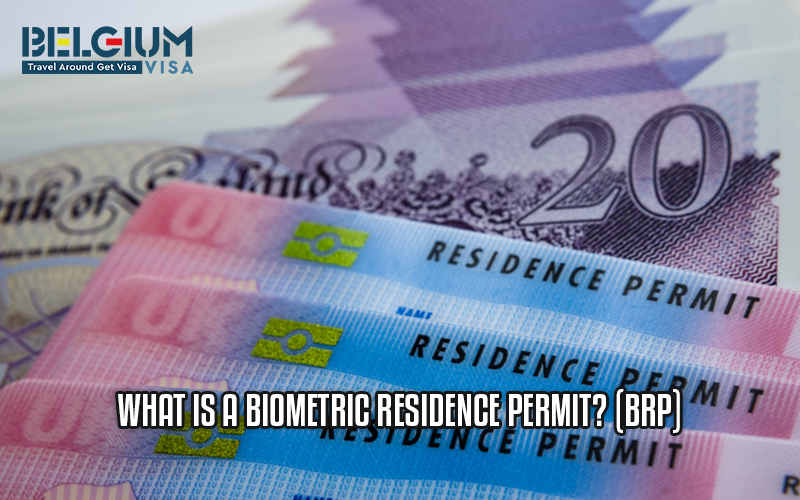
Under the UK rules, certain nationals require a document known as a Biometric residence permit (BRP), which is proof of their immigration status in the UK. But what is this document all about? How to apply for this?
BRPs are issued following visa approval, and there is no need to apply separately for this document. However, the holders of BRP must adhere to some of the rules, including what if BRP is lost, what if it expires, etc.
In this blog, we explain what it is, what the requirements are, how to get it, and what the e-Visa is. You will also get the latest update regarding the BRP.
As the holder of a BRP, you can prove your identity and immigration quickly, and here you will get to know everything about this.
Those who applied for a UK visa for longer than 6 months will require a BRP as part of the process. This permit is issued by the HOME OFFICE, which has the holder’s biometric information as well as immigration status embedded. This permit has a distinctive document number.
A UK residence card is a crucial document, and if you refuse to give this biometric information, your application will strictly be rejected, which can lead to deportation.
This residence permit confirms the immigration status of the holder in the UK and also gives the right to public services or benefits.
*** BRPs are now being issued with an expiry date of 31 December 2024, regardless of the individual’s period of leave, and from 1 January 2025, the Home Office will no longer issue BRPs. Instead, visa holders are to rely on their eVisa digital status.
Read more: How To Apply for a Belgium Schengen Tourist Visa from the UK?

Biometric Residence Permit (BRP) and Biometric Residence Card (BRC) are crucial immigration documents. BRPs show immigration status and give the right to work to non-EU nationals, while BRCs are for EU citizens and their family members only.
Both documents have biometric information and security features. BRPs generally have physical data and take a longer processing time, whereas BRCs have digital verifications.
A BRP is a permit that comprises biometric information, including fingerprints, name, date, and place of birth. Many BRPs show the National Insurance number on the back side that can be used during employment.
BRPs also boast security features that make them a reliable document for verification and prevent fraud. These documents give authority to the holder to live and work in the UK and use public services.
The design and security features establish the authenticity of these documents. The length of these documents determines their usability. Biometric Residence Permit (BRP)’s valid duration ranges from months to several years, as per the visa category they hold.
BRP card needs to be renewed to get them extended, and this requires a new application process. The renewal process comprises proof of your identity and right to stay through digital platforms.
The Residence permit UK has an expiration date along with other information, like restrictions and access to public funds. Holders should always check their BRP expiration dates and initiate the renewal procedures as needed to maintain their status in the UK.
*** UPDATE: All BRPs have now expired from 31st December 2024, but can still be used in some cases.
Read more: ETIAS Rules Explained Simply
The documents required for a Biometric Residence Permit application are:

The changes from Biometric residence permit cards to digital eVisas are a great shift in immigration in the UK. This change is the result of the need for a more effective system built on digital technology. Here’s what to know about this transition from UK BRP to UK eVisa/ share code:
Timeline: It would be effective from 31st December, 2024, when all the permits will be cancelled and converted to digital documents called eVisa. Since then all immigration status records will be maintained online.
Benefits of eVisa: Being a new technology, the eVisa offers various benefits like easier management, no loss of records, and a smooth process for maintaining records.
Preparation: Travelers are encouraged to stay informed about this process and ensure they create a timely account for the eVisa.
Expected Read: Famous Belgium Food and Drinks to Try: Best Places To Eat In Belgium
In conclusion, a Biometric residence permit (BRP) is a crucial document that has immense benefits during stay in the country. Any foreigner residing in the UK or willing to do so must know about the BRP and the latest updates regarding it.
We have covered everything about this legal document and mentioned about eVisa that has abolished the BRP. So, make sure to create a UKVI (United Kingdom visa and immigration) account and switch the card to an eVisa.
Make sure to upgrade your immigration status with this digital document, i.e., eVisa, which is just around the corner.
A Biometric Residence Permit (BRP) stores the holder’s personal details, including their place of birth, name, date of birth, fingerprints, and a digital photograph.
The validity of a Biometric Residence Permit in the UK varies based on the individual’s visa or immigration status. Typically, a BRP is valid for the duration of the holder’s visa, which can range from six months to several years.
A Biometric Residence Permit has several benefits. It serves as proof of the immigration of the holder’s in the UK. This permit also allows the holder the right to work in the UK or pursue higher studies, and also gives access to public services.
The documents required for a Biometric Residence Permit application include a valid passport or travel document, a completed visa application form, and evidence of the applicant’s eligibility to stay in the UK, such as an offer letter, etc.